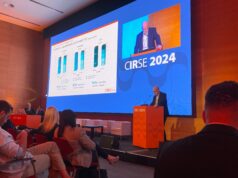
From a cost-effectiveness standpoint, primary stenting of the superficial femoral artery (SFA) for the treatment of intermittent claudication can, in many countries, be used as an adjunct to exercise training advice. This is the main conclusion of Henrik Djerf (Sahlgrenska University Hospital, Gothenburg, Sweden) and colleagues, reporting two-year results of a randomised, multicentre trial online in the European Journal of Vascular and Endovascular Surgery (EJVES).
Djerf et al consider what their paper add to the literature: “This examination of the cost effectiveness within a randomised controlled trial for endovascular treatment of the SFA in patients with intermittent claudication adds longer follow-up data than previous studies.”
The authors write that invasive treatment of intermittent claudication is commonly performed, despite limited evidence of its cost effectiveness. In addition, they note that endovascular treatment is performed frequently due to the fact that symptoms of intermittent claudication are mainly caused by atherosclerotic lesions in the SFA. The aim of the present study, Djerf and colleagues relay, was to investigate the cost effectiveness of endovascular treatment versus its non-invasive counterpart.
The researchers randomised 100 patients with intermittent claudication due to lesions in the SFA to treatment with primary stenting, best medical treatment and exercise advice, or to best medical therapy and exercise advice alone (the control group), noting that patients were recruited from seven hospitals in Sweden. For their present analysis of cost effectiveness after two years, the investigators analysed 84 patients with data on quality-adjusted life years (QALYs).
Writing in EJVES, Djerf et al report that the mean cost per patient was €11,060 in the stent group and €4,787 in the control group, resulting in a difference of €6,273 per patient between the groups. In addition, they found that the difference in mean QALYs between the groups was 0.26, in favour of the stent group, which resulted in an incremental cost-effectiveness ratio (ICER) of €23,785 per QALY.
The authors conclude that the costs associated with primary stenting in the SFA for the treatment of intermittent claudication were higher than for exercise advice and best medical therapy alone. They add that, with concurrent improvement in health-related quality of life, primary stenting was a cost-effective treatment option according to the Swedish national guidelines (ICER <€50,000–70,000) and approaching the UK’s National Institute for Health and Care Excellent threshold for willingness to pay (ICER <£20,000–30,000).
In many countries, primary stenting of the SFA is cost-effective and therefore can be used as an adjunct to exercise training advice, Djerf and colleagues summarise. However, they stress that successful implementation of structured exercise programmes and longer follow-up may alter these findings in the future.












